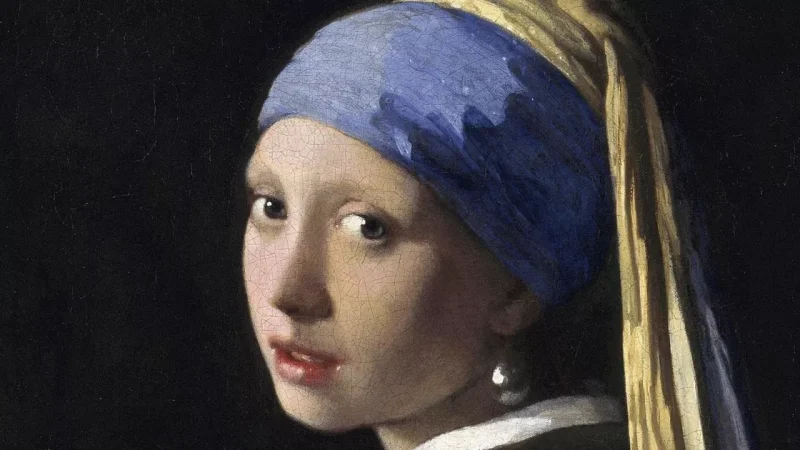The world of art has been profoundly shaped by the brilliance of Famous Holland Painters throughout history. These artists have not only contributed to the rich tapestry of Dutch culture but have also left an indelible mark on the global art scene. From the meticulous brushwork of the Dutch Golden Age to the bold strokes of contemporary expressions, the legacy of these painters resonates today. This article will delve into ten iconic artists from the Netherlands, exploring their unique contributions and the significance of their works in the art world.
Rembrandt van Rijn: The Master of Light and Shadow
One of the most renowned Famous Holland Painters, Rembrandt van Rijn (1606–1669) is celebrated for his revolutionary techniques in capturing light and shadow, known as chiaroscuro. His portraits, such as “The Night Watch” and “Self-Portrait with Two Circles,” showcase his ability to evoke deep emotion and complexity. Rembrandt’s work goes beyond mere representation; it delves into the psychological depth of his subjects. His influence extends far beyond his lifetime, making him a pivotal figure in the history of Western art.
Vincent van Gogh: The Torchbearer of Post-Impressionism
Another legendary figure among Famous Holland Painters is Vincent van Gogh (1853–1890). Known for his vivid colors and emotive brushwork, Van Gogh’s work often reflects his turbulent mental state. Masterpieces like “Starry Night,” “Sunflowers,” and “The Bedroom” capture the essence of his emotional landscape. His posthumous fame skyrocketed, making him a foundational figure in modern art. Van Gogh’s unique style, characterized by swirling forms and vibrant colors, continues to inspire countless artists around the world.
Johannes Vermeer: The Quiet Observer
Johannes Vermeer (1632–1675) is a celebrated name among Famous Holland Painters, best known for his tranquil domestic scenes and meticulous attention to detail. Works like “Girl with a Pearl Earring” and “The Milkmaid” exhibit Vermeer’s extraordinary ability to capture light, texture, and the nuances of everyday life. His use of perspective and composition adds depth to his paintings, inviting viewers into intimate moments. Despite producing only about 36 known paintings, Vermeer’s influence on subsequent generations of artists is profound.
Piet Mondrian: The Pioneer of Abstract Art
Piet Mondrian (1872–1944) stands out as a key figure in the development of abstract art, making him one of the most influential Famous Holland Painters. His distinctive style, characterized by geometric shapes and primary colors, aimed to express universal beauty through simplicity. Notable works like “Composition with Red, Blue, and Yellow” showcase his unique approach to harmony and balance. Mondrian’s work transcended traditional art forms and paved the way for modern design and architecture, leaving an enduring legacy.
Hieronymus Bosch: The Visionary of Fantasy
Among the Famous Holland Painters, Hieronymus Bosch (c. 1450–1516) is renowned for his fantastical and often surreal imagery. His most famous work, “The Garden of Earthly Delights,” presents a complex narrative filled with allegory and moral lessons. Bosch’s imaginative style and attention to detail invite viewers to explore a world of the bizarre and the extraordinary. His influence can be seen in the works of later surrealists, demonstrating his lasting impact on the art world.
Frans Hals: The Portrait Innovator
Frans Hals (1582–1666) is celebrated as one of the most important Famous Holland Painters of the Dutch Golden Age. His lively portraits, such as “The Laughing Cavalier,” are notable for their dynamic compositions and the vibrancy of his subjects. Hals’s ability to capture personality and movement within a single frame revolutionized portrait painting, setting a standard for future artists. His unique style reflects the exuberance of 17th-century Dutch society, making him a pivotal figure in the history of portraiture.
Jan Steen: The Master of Genre Painting
Jan Steen (1626–1679) is known for his genre scenes that often depict everyday life with humor and a moral undertone, placing him among the Famous Holland Painters. His vibrant compositions, such as “The Feast of Saint Nicholas,” reveal the chaos and joy of Dutch domestic life. Steen’s ability to convey complex narratives and emotions within a single painting demonstrates his keen observational skills and masterful technique. His work offers valuable insights into 17th-century Dutch culture and social norms.
Claude Monet: The Impressionist Influence
While primarily associated with French Impressionism, Claude Monet (1840–1926) has ties to the broader movement of Famous Holland Painters through his admiration for the Dutch landscape. Monet’s work emphasizes the effects of light and atmosphere, leading to a more expressive style. His famous water lilies and haystacks series reflect a deep appreciation for nature’s beauty. Monet’s innovative approach to painting, with a focus on capturing the fleeting moments of light, has influenced countless artists and remains a crucial part of art history.
Aelbert Cuyp: The Landscape Visionary
Aelbert Cuyp (1620–1691) is celebrated as one of the greatest landscape painters among Famous Holland Painters. His works, characterized by golden sunlight and expansive skies, evoke a serene beauty that captures the Dutch countryside’s essence. Paintings like “The Large Landscape” showcase Cuyp’s ability to convey mood and atmosphere through his masterful use of light. His influence can be seen in the romantic landscapes of later artists, reinforcing the importance of nature in art.
Otto Dix: The Bold Expressionist
While not a traditional representative of Famous Holland Painters, Otto Dix (1891–1969) made significant contributions to the art world as a German painter influenced by Dutch masters. His powerful and often controversial works, such as “The War” and “The Trench,” delve into the human experience’s darker aspects. Dix’s bold expressionism and critical portrayal of society resonate with the themes explored by earlier Dutch artists, highlighting the continued relevance of their influences.
Conclusion
The legacy of Famous Holland Painters is a testament to the richness and diversity of Dutch art. From the masterful techniques of Rembrandt and Vermeer to the emotional depth of Van Gogh and the innovative approaches of Mondrian, each artist has contributed uniquely to the art world. Their works continue to inspire and influence artists, collectors, and art enthusiasts globally, ensuring that the spirit of Dutch creativity lives on. Understanding these iconic figures provides a deeper appreciation of the artistic movements they represent and the cultural heritage they embody.
FAQs
Q1. Who are some of the most famous Dutch painters?
Some of the most famous Dutch painters include Rembrandt van Rijn, Vincent van Gogh, Johannes Vermeer, and Piet Mondrian. Each of these artists has made significant contributions to the art world.
Q2. What characterizes Dutch Golden Age painting?
Dutch Golden Age painting is characterized by its attention to detail, use of light and shadow (chiaroscuro), and a focus on realism in portraits, landscapes, and genre scenes.
Q3. How did Dutch painters influence modern art?
Dutch painters, especially from the Golden Age, influenced modern art by introducing innovative techniques, emotional depth, and new perspectives on light, space, and color, which have been adopted and adapted by many contemporary artists.
Q4. Why is Vincent van Gogh so famous?
Vincent van Gogh is famous for his emotionally charged works, vibrant colors, and innovative brushwork. His life story, marked by struggles with mental health and posthumous fame, adds to his iconic status in the art world.
Q5. What are some common themes in the works of Famous Holland Painters?
Common themes in the works of Famous Holland Painters include the exploration of light and shadow, depictions of everyday life, the beauty of nature, and psychological depth in portraiture, reflecting the cultural and social dynamics of their time.
Also read: Red Light District Glasgow: 5 Important Things You Need to Know Before Visiting









